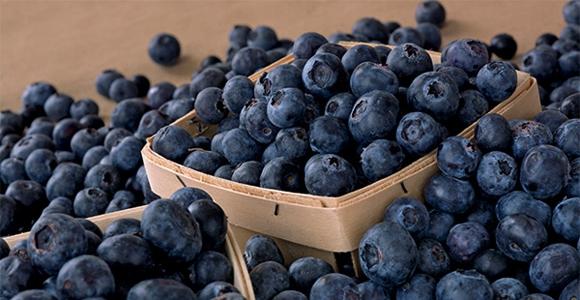Importance of Sanitation
Diseases can become a significant problem in commercial and home fruit plantings, resulting in premature leaf drop, fruit decay, dieback, decline, and even plant death. When diseases do occur, it is often presumed that fungicides are the most important and effective disease management tools available. However, a good sanitation program can help reduce the need for chemical controls and can improve the effectiveness of other practices for managing disease. This often-overlooked disease management tool reduces pathogen numbers and eliminates infective propagules (inoculum such as fungal spores, bacterial cells, virus particles, and nematode eggs) that cause disease (Figure 1).

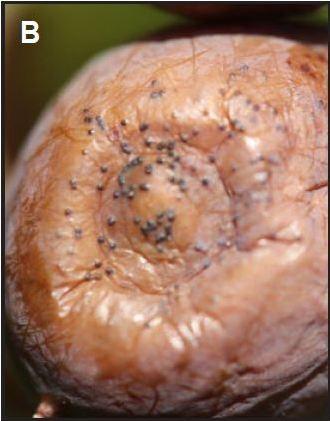

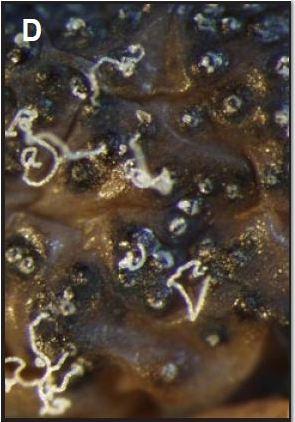
Fig. 1. Some fungal pathogens, such as the fungus that causes black rot of grape (A) produce visible fruiting bodies (B &C) that contain large numbers of fungal spores (D). A single diseased leaf or fruit can produce hundreds or thousands of spores, each capable of producing a new infection.

Certain foliar fungal and bacterial leaf spots can become prevalent during rainy or humid growing seasons.When disease management is neglected, pathogen populations build-up and continue to increase as long as there is susceptible plant tissue available for infection and disease development. Infected plant tissue, infested soil, and pathogen propagules all serve as sources of pathogens that can later infect healthy plants.
Reduction of pathogens by various sanitation practices can reduce both active and dormant pathogens. While actively growing plants can provide host tissue for pathogen multiplication, dead plant material (dried fruit called mummies, or diseased foliage, stems, and/or roots) can harbor overwintering propagules for months or years (Figure 2). These propagules can travel via air/wind currents, stick to shoes or tools, or move with contaminated soil or water droplets. Thus, prevention of spread of pathogens to healthy plants and the elimination of any disease-causing organisms from one season to another are the foundations for a disease management program using sanitation practices.
Sanitation Practices
Elimination and/or reduction of pathogens from the plantings results in fewer pathogen propagules. The following sanitary practices can reduce amounts of infectious pathogens:
- Remove diseased plant tissues from infected plants. Prune cankered branches (Figure 3) several inches below the point of infection.
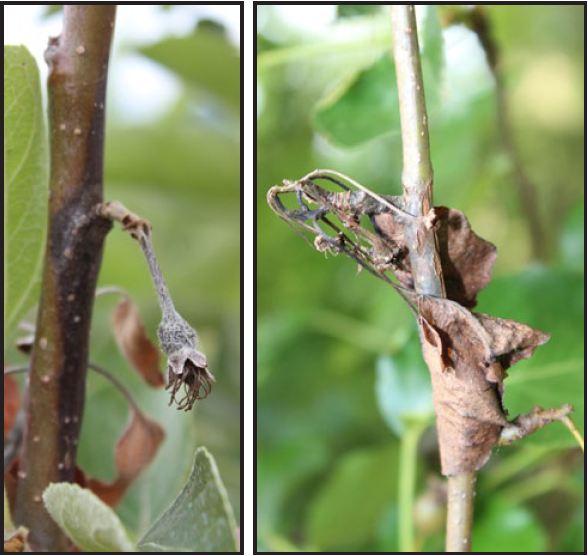 Fig 3. Cankers/stem lesions often contain infective pathogens.
Fig 3. Cankers/stem lesions often contain infective pathogens.Cuts should be made at an intersecting branch.
- Disinfest tools used to prune galls and cankers. Cutting blades should be dipped into a commercial sanitizer, 10% Lysol disinfectant, 10% bleach, or rubbing alcohol between each cut. This is especially important when pruning bacterial diseases, such as fire blight, or canker-affected branches. If using bleach, rinse and oil tools after completing work, to prevent corrosion.
- Discard trees, bushes, and vines that are heavily infected and those with untreatable diseases (e.g. root rots, viruses, and vascular wilts). When practical, dig infected plants to include as much of the root system as possible (Figure 4).
- Fruit trees, canes, and vines infected with systemic diseases (e.g. bramble viruses) that show considerable dieback should be completely removed (upper
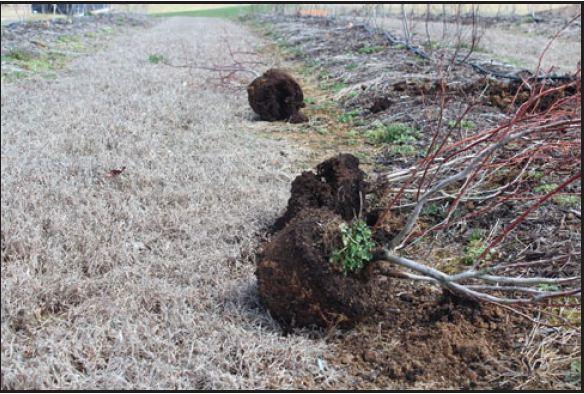 Fig 4. Root rot pathogens can build up in soils.
Fig 4. Root rot pathogens can build up in soils.plant parts as well as roots).
- Fungicides are more effective when pathogen levels are lower and diseased tissue is minimal. Prune or remove infected tissue (flowers, fruit, stems, leaves) and debris before fungicide applications.
- Discard fallen leaves, prunings, fruit mummies, and culled plants. Never leave diseased plant material in the orchard or vineyard, as pathogens may continue to multiply by producing spores or other propagules. Infected plant material should be buried, burned, or removed from the area altogether.
- Debris is a major source of infective propagules, including overwintering pathogens. To the extent possible,
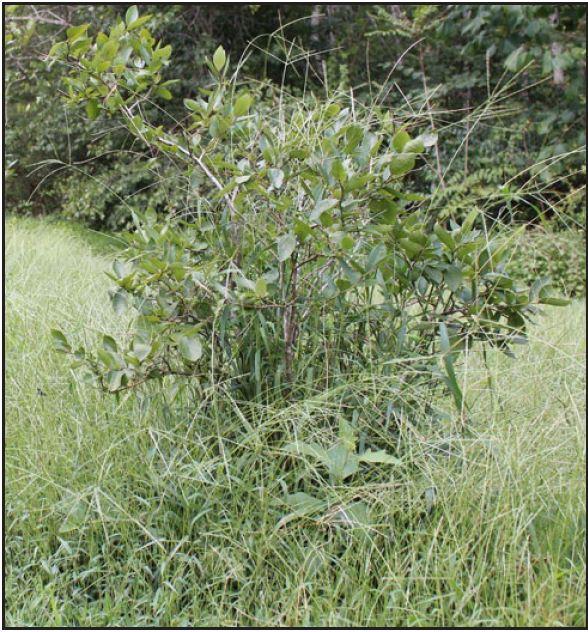 Fig 5. Weeds can become hosts for pathogens.
Fig 5. Weeds can become hosts for pathogens.rake and remove fallen buds, flowers, fruit, twigs, and leaves. Always dispose of rotting or diseased fruit as soon as symptoms develop.
- Commercial orchard growers may mow fallen leaves and apply nitrogen to promote the breakdown of leaf tissues. This technique is only effective for tissues that decompose easily. Rigid leaves and woody tissue do not respond to this treatment.
- Do not compost diseased plant material or infested soil because incomplete composting (temperatures below 160˚F) may result in survival of propagules.
- Remove weeds (Figure 5) and volunteer plants to prevent establishment of a “green bridge” between plants. A green bridge allows some pathogens to infect alternate hosts until a more suitable one becomes available. Remove aboveground parts and roots.
Additional Resources
Print version can be found under the Small Fruit, Management & Production Guides (Commercial) heading on this page: Extension Plant Pathology Publications http://www2.ca.uky.edu/agcollege/plantpathology/extension/pubs.html
Contacts:
Nicole Ward Gauthier, University of Kentucky, Extension plant pathologist
David Koester, University of Kentucky, Extension horticulture agent
Faye Tewksbury, University of Kentucky, Extension horticulture agent
